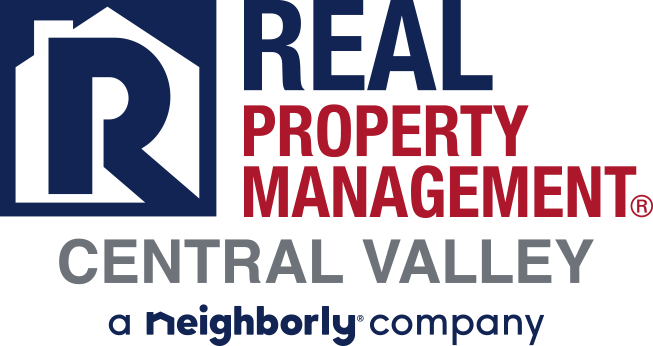Tips For Boosting Tenant Retention

Searching for tenant retention tips? If so, you’ve come to the right place!
Finding and keeping tenants is one of the most important elements of property management. It can be a challenge to maintain tenant satisfaction and keep tenants in your units for longer than the initial lease term. Fortunately, there are proven strategies that can help. In this blog post, we’ll look at what tenant retention is, the benefits of tenant retention, how to calculate the apartment turnover rate, 2016 survey of operating income & expenses in rental apartment communities, how to respond to tenant inquiries, lease retention, and 10 proven tips to boost tenant satisfaction and retain long-term tenants.
What is Tenant Retention?
Tenant retention is the process of maintaining a tenant in a rental property beyond the initial lease term. It is the process of ensuring that existing tenants are satisfied with their rental experience and want to stay for the long term. It is important for a landlord or property manager to retain long-term tenants, as this can help to maintain a steady stream of rental income and reduce tenant turnover costs.
Benefits of Tenant Retention
The benefits of tenant retention are numerous. Keeping long-term tenants can help to reduce the time and cost associated with tenant turnover. This can save a landlord or property manager money in the long run, as they do not have to incur the costs associated with tenant turnover, such as advertising and preparation of vacant units. Additionally, long-term tenants are more likely to be reliable and responsible, as they have had the opportunity to get to know the rental property and the landlord. This can help to reduce tenant-related problems and improve the overall quality of the rental experience for all parties involved.
The Cost of Tenant Turnover
The cost of tenant turnover can be significant. When a tenant moves out of a unit, the landlord or property manager must incur costs associated with advertising, tenant screening, and preparation of the vacant unit. Additionally, the time spent finding and screening new tenants can be costly in terms of both time and money. All of these costs can add up quickly, so it is important to focus on tenant retention in order to minimize those costs.
How to Calculate Apartment Turnover Rate
The apartment turnover rate is a metric used to measure the rate at which tenants move in and out of rental units. It is calculated by dividing the number of tenant move-outs by the total number of units. The higher the turnover rate, the more frequently tenants move in and out of units. This can be a sign that the landlord or property manager is not retaining tenants for the long term.
2016 Survey of Operating Income & Expenses in Rental Apartment Communities
The National Apartment Association conducted a survey in 2016 to analyze the operating income and expenses in rental apartment communities. The survey found that the average tenant turnover rate was roughly 60%. Additionally, the survey found that the average cost of tenant turnover was around $2,000 per unit. These figures demonstrate the importance of tenant retention in order to reduce costs and maintain a steady stream of rental income.
How to Respond to Tenant Inquiries
When a tenant inquires about a rental property, it is important to respond quickly. A prompt response shows that the landlord or property manager is attentive and professional. Additionally, it demonstrates that the landlord or property manager is interested in providing a good rental experience. By responding quickly and professionally, landlords and property managers can ensure that tenants feel respected and valued. This can help to foster a sense of trust and loyalty between landlord and tenant and increase the chances of tenant retention.
Lease Retention
Lease retention is another important aspect of tenant retention. When a tenant’s lease is about to expire, it is important for a landlord or property manager to reach out and offer to renew the lease. This can help to ensure that the tenant feels valued and appreciated and is more likely to stay in the unit for the long term. Additionally, it can help to avoid the costs associated with tenant turnover.
Ten Proven Tips to Boost Tenant Satisfaction & Retain Long-Term Tenants
Now that we’ve discussed the basics of tenant retention, let’s take a look at 10 proven tips to boost tenant satisfaction and retain long-term tenants.
- Respond promptly to tenant inquiries. As mentioned above, responding quickly to tenant inquiries is a great way to show that you’re attentive and professional.
- Offer competitive rental rates. Renters are always looking for a great deal, so it’s important to stay competitive.
- Focus on tenant amenities. Tenants appreciate amenities such as on-site laundry, swimming pools, and gyms. Offering these amenities can help to attract and retain tenants.
- Offer flexible lease terms. Offering flexible lease terms can help to attract and retain tenants.
- Offer incentives for long-term tenants. Offering incentives such as discounted rent or free amenities can help to encourage tenant retention.
- Maintain a positive relationship with tenants. It’s important to maintain a positive relationship with tenants. This can help to foster a sense of trust and loyalty.
- Have a clear and concise rental agreement. Having a clear and concise rental agreement can help to ensure that both landlord and tenant understand the terms of the lease.
- Make sure the rental unit is in good condition. Keeping the rental unit in good condition is a must for tenant retention.
- Prioritize tenant safety. Tenants appreciate feeling safe and secure in their rental unit.
- Follow up with tenants. Following up with tenants after their initial inquiry is a great way to show that you care about their rental experience.
Conclusion
Tenant retention is an important element of property management. It can help to reduce the time and cost associated with tenant turnover and ensure a steady stream of rental income. In this blog post, we’ve looked at what tenant retention is, the benefits of tenant retention, how to calculate the apartment turnover rate, 2016 survey of operating income & expenses in rental apartment communities, how to respond to tenant inquiries, lease retention, and 10 proven tips to boost tenant satisfaction and retain long-term tenants. When thinking about tenant retention and owner profits, a property manager should consider the cost of tenant turnover and focus on strategies that can help to reduce costs and retain tenants for the long term.
By following these tips, landlords and property managers can ensure that their tenants are satisfied and stay for the long term. With a little effort and the right strategies, landlords and property managers can boost tenant satisfaction and retain long-term tenants.
Contact Us
At RPM Central Valley, we specialize in property management for the Central Valley area.
To learn more about the property management services we can offer you, contact us today by calling (209) 572-2222 or click here to connect with us online.
